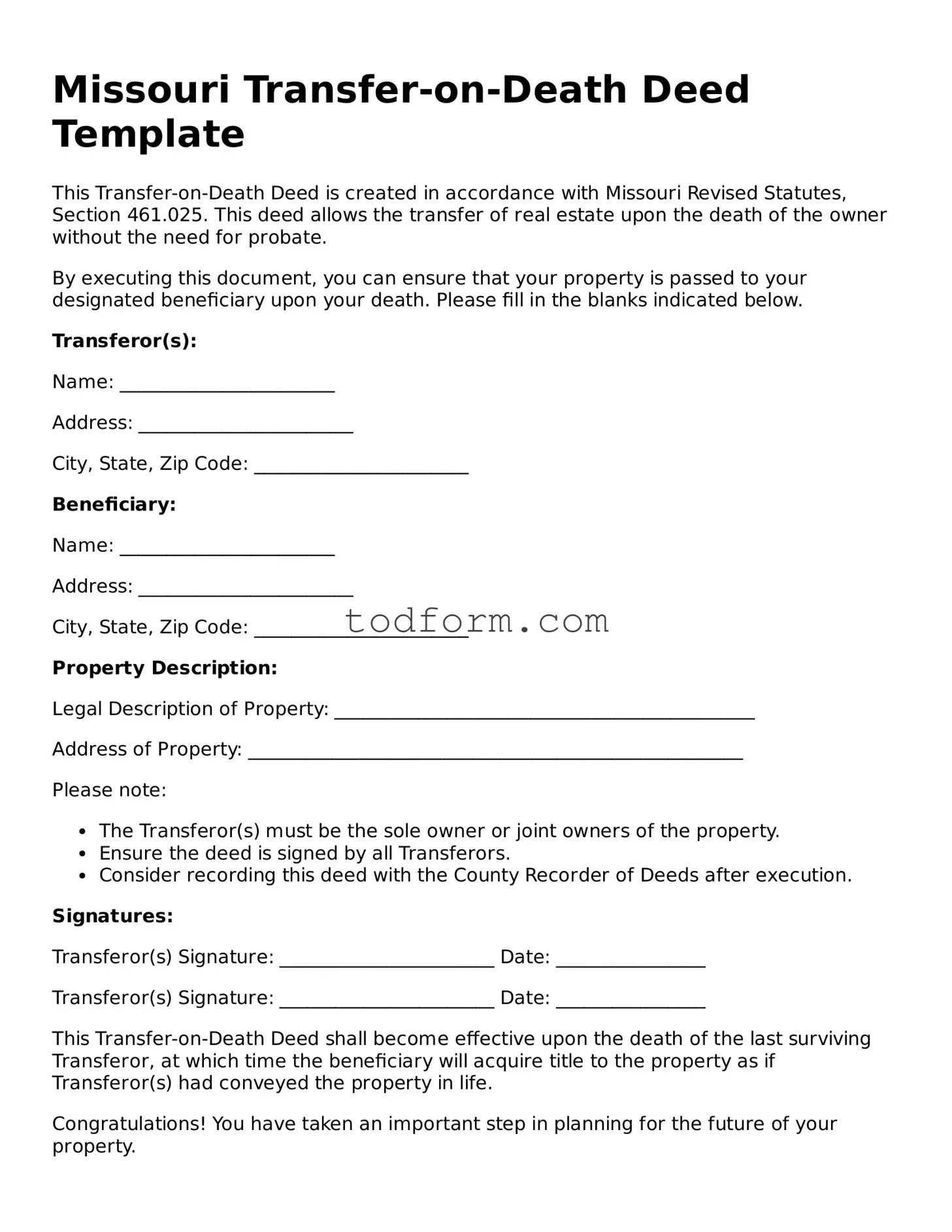The Missouri Transfer-on-Death Deed (TODD) is similar to a revocable living trust. Both documents allow individuals to transfer property to beneficiaries without going through probate. In a revocable living trust, the property is held in the trust during the grantor's lifetime and can be managed or revoked as needed. The TODD, on the other hand, allows the property owner to retain control until death, at which point the property automatically transfers to the named beneficiaries. This simplicity makes both options appealing for estate planning.
A durable power of attorney is another document that shares similarities with the TODD. While the TODD deals specifically with real property transfer upon death, a durable power of attorney allows an individual to designate someone to make financial decisions on their behalf while they are alive. Both documents provide a way to manage assets, but the power of attorney is effective during the principal's lifetime, whereas the TODD takes effect only after death.
A life estate deed is another document that bears resemblance to the TODD. In a life estate deed, the property owner retains the right to live in and use the property during their lifetime, while naming a remainderman who will receive the property upon the owner's death. Similar to the TODD, this deed avoids probate, allowing for a smoother transition of property ownership. However, the life estate deed limits the owner’s ability to sell or encumber the property without the remainderman's consent.
The enhanced life estate deed, often called a Lady Bird deed, is akin to the TODD as well. This type of deed allows the property owner to retain full control during their lifetime while designating beneficiaries who will inherit the property upon death. Like the TODD, it bypasses probate. However, the enhanced life estate deed allows the owner to sell or mortgage the property without needing consent from the beneficiaries, providing more flexibility.
A joint tenancy with right of survivorship is another document similar to the TODD. In this arrangement, two or more individuals hold title to a property together. When one owner dies, their interest automatically transfers to the surviving owner(s). This method also avoids probate, similar to the TODD. However, joint tenancy can complicate matters if one owner wishes to sell their share or if there are multiple owners with differing intentions.
A beneficiary designation form is comparable to the TODD in that it allows individuals to name beneficiaries for specific assets. This form is commonly used for financial accounts, insurance policies, and retirement plans. Like the TODD, it enables the direct transfer of assets upon death, avoiding probate. However, the TODD specifically addresses real property, whereas beneficiary designation forms apply to various types of assets.
A family limited partnership (FLP) can also be likened to the TODD. An FLP allows family members to pool their assets in a partnership, providing benefits such as asset protection and potential tax advantages. While the TODD focuses on the transfer of real estate, an FLP can include various assets and provides a mechanism for transferring ownership interests to family members, potentially reducing estate taxes and avoiding probate.
A transfer-on-death account (TOD account) is similar to the TODD as it allows for the transfer of bank or investment accounts directly to beneficiaries upon the account holder's death. Both documents facilitate the transfer process outside of probate. However, a TOD account is specifically designed for financial assets, while the TODD pertains to real estate. This distinction highlights the versatility of transfer-on-death arrangements in estate planning.
Finally, a secured transaction agreement can be compared to the TODD in terms of asset management. In a secured transaction, a borrower pledges collateral to secure a loan. If the borrower defaults, the lender can claim the collateral. Similarly, a TODD allows property owners to designate beneficiaries while retaining control over their property. Both documents serve to protect and manage assets, albeit in different contexts.
